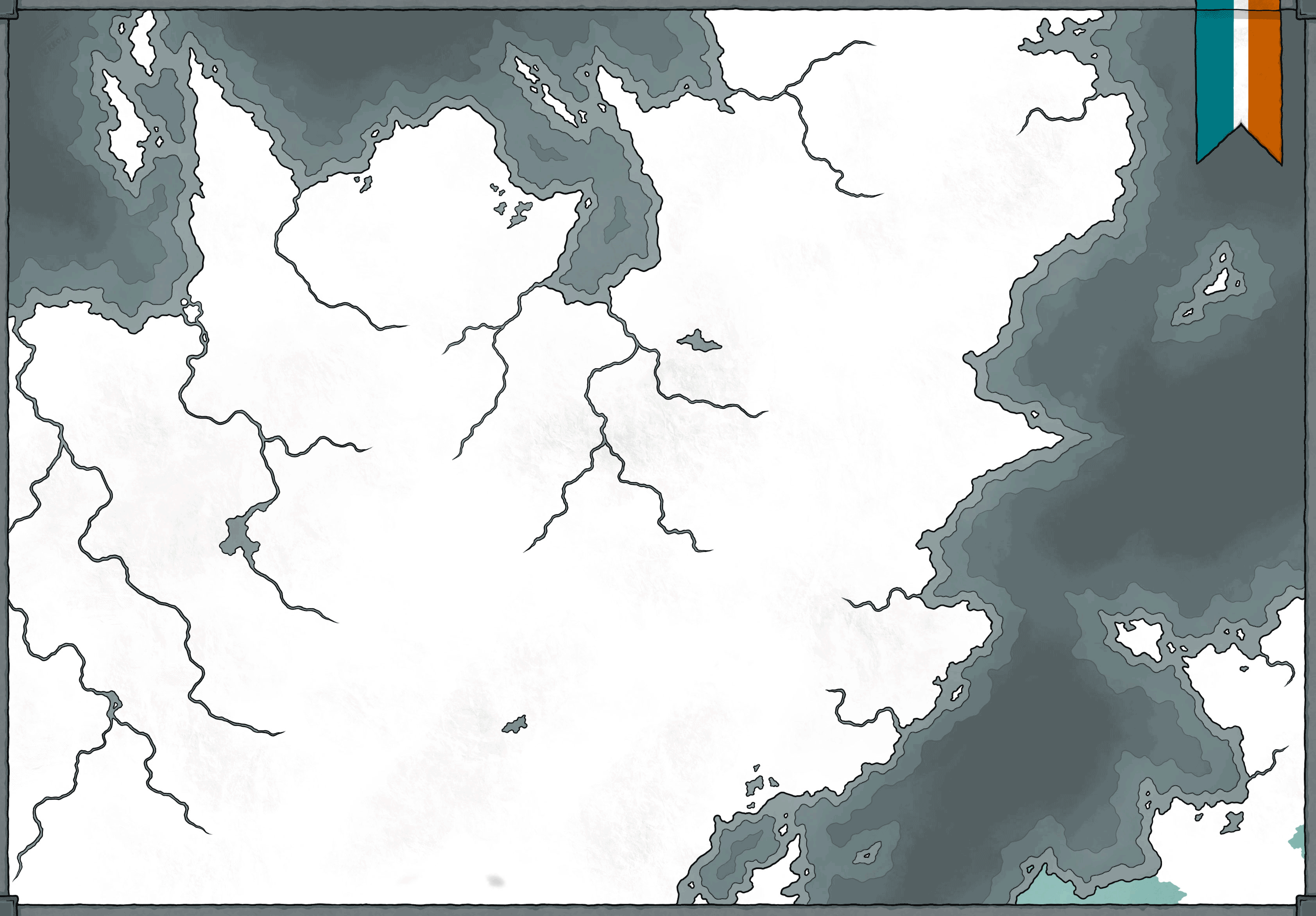They were offered peace, prosperity, and protection, but they chose their own demise. If the savages refuse to join willingly, then we must incorporate them by force!— Ehir Vadba Rahyamin, Bahal of the Rahyamins, 187 AU
Once a great power that stretched from
Pekkola to far and distant lands in the south, the Rahyamin Empire ruled much of the known world. Their founder,
Tamil the Uniter, brought all of his neighbouring tribes under one banner. With their combined forces, they were able to expand their borders.
Ehdabil, the Rahyamins' seat of power, became a crucial centre of trade and the wealth that poured into the city fueled further conquests. In their neverending quest to acquire wealth and to spread the light of civilisation, the nation stretched itself thin until it could no longer sustain itself.
Plagued with internal strife, decadence, and enemies on all fronts, the
House of Rahyamin found their lands overwhelmed by foes both barbaric and civilised. Some were interested in mere loot and plunder, while other, more ambitious men, sought to claim their land for their own.
Government
From since the days of its creation, the Rahyamin Empire had been ruled by a single dynasty. The head of that family sat on a luxurious throne decorated with gems, gold, ivory, and all manner of exotic goods that they could get their hands on. They called their ruler
Bahal and his throne was flanked by eight chairs which belonged to the members of the
Vatebrai, decendants of the tribal chiefs who helped in the creation of the empire.
Imperial Succession Law
During the reign of a Bahal, the Vatebrai were required to vote for whoever they wanted to see next on the throne. Only members of the House of Rahyamin were eligible candidates, and for most of the empire's history, only adult men were eligible. The candidate with the most support by the end of a Bahal's reign would be crown as the next monarch.
Pahlatic Law
Bahal Pahla the Reformer changed the centuries-old succession laws in 234 AU, granting female members of his dynasty the right to be chosen as a Bahale. According to contemporary records, rumours surrounded the monarch's relations with other male members of his family. People believed that he despised most of them and wanted his niece or her daughter to rule instead.
History
Tamil Rahyamin was crowned by leaders of the
Idiri tribesmen in 1 AU. The city of Ehdabil quickly rose in prominence soon after. With the population constantly on the rise, the people and their leaders saw a need for more resources. Those unwilling to accept the Rahyas demands and trade deals were subjugated by force, their people enslaved to harvest resources for the glory of Ehdabil and the Rahyamin dynasty.
Conquest of Pekkola
By the end of the 2nd century, the Rahyamin Empire was ready to move to the harsh and unpredictable lands to their north. They had established contact with the
Ceireds and
Tathians in Pekkola and through them, they were aware of the other peoples in the region.
The
conquest of Pekkola would start with the fall of
Tathland. Soon after, they continued their invasion by subjugating the Ceireds and conquering most of the
Vakner in
Henvikendal.
Several years later, the
Bahal led his army to
Aethelland, which he was able to conquer through the strength of his forces and by pitting the locals against one another.
After Aethelland had fallen, the remaining
Aeth and Vakner rulers offered to pay tribute to the Rahyamins in order to keep their power. As part of the tribute, they were asked to lend the Rahya army additional soldiers. With their armies reinforced, Ehir Vadba Rahyamin moved his armies through the
Sunless Paths, suffering many losses in the process. Despite their weakened state, the Rahya were able to launch a successful invasion against the
Pijari, going as far as to taking control of
Várájohka, the largest of their cities. The Rahyamins had hoped to continue their invasion, but their forces were depleted and fighting the mounted Pijari archers on the flat grassland would have cost the mall they had gained.
Fall of the Empire
After nearly three centuries of growth, the empire had found itself in a strange predicament following the sudden and highly suspicious death of Bahale
Ahlana I. While usually the successor would be known even before the monarch's death, on that occasion the Vatebrai was indecisive. All eight members voted for a separate candidate and no one was sure on how to proceed. While the members of the Vatebrai were preparing to negotiate, the Rahyamin candidates all made their moves.
Several of the ambitious members of the royal family who had received support from the council gathered their allies and prepared to take what they saw as their rightful throne by force. Five of the claimants declared themselves the true monarch, one of them renounced his claim, and the remaining two were the son and daughter of the previous Bahale who were too young to press their claims.
Those most loyal to the former leader and her family rescued the young claimants from the palace, escaping Ehdabil while a massive civil war broke out in the heart of the empire. As the forces that garrisoned the provinces in Pekkola moved south to fight in the chaos, the northerners reclaimed their lost independence and pushed the remaining garrison back south or into hiding. Eventually, all of the claimants had either died or gone missing, their armies shattered and the realm divided. Those in Pekkola who remained loyal to the fallen empire hid in the frigid wastes of
Bratayya and the Sunless Paths. Their people became known as the
Remnant.






Comments